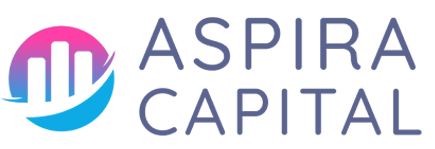The Importance of a Business Checklist for 2025
As you prepare to kick off 2025, having a business checklist is essential for setting the foundation for your company. A well-structured annual checklist focuses your efforts and prioritizes tasks that will drive your organization forward. Understanding the components of effective startup planning becomes paramount as the landscape evolves.
Step 1: Define Your 2025 Goals
Goal alignment is crucial for any business. Begin by identifying your key objectives for the year. Ask yourself:
- What are my financial targets?
- What new products or services do I plan to launch?
- How can I enhance customer satisfaction?
- What are my growth strategy priorities?
Ensure that your goals align with your long-term vision and mission. This clarity will serve as the cornerstone of your success strategies for the year ahead.
SWOT Analysis
Conduct a SWOT analysis to identify your organization’s strengths, weaknesses, opportunities, and threats. This will help refine your goals and tailor your strategies accordingly. Document your findings in a format that can be easily accessed and reviewed, which can aid in goal alignment.
Step 2: Develop a Comprehensive Business Plan
A solid business plan is a crucial element in 2025 planning. It serves as your roadmap and includes:
- Executive Summary: an overview of your mission and vision.
- Market Analysis: research on industry trends and your competition.
- Marketing Strategy: how you plan to reach your target audience.
- Operational Plan: day-to-day operations and logistics.
- Financial Projections: forecasts and funding requirements.
Your business plan should be revisited and adjusted throughout the year to accommodate changing market conditions and business needs.
Budgeting and Financial Strategy
As part of your business plan, establish a budget that outlines your expected revenues and expenses. Utilize financial forecasting models to predict cash flow and returns on investment. Consider these financial strategies:
- Investing in cost-effective marketing strategies.
- Allocating resources for technology upgrades and productivity tools.
- Setting aside a contingency fund for unforeseen expenses.
Step 3: Actionable Marketing Strategies
Successful marketing in 2025 requires a focus on both traditional and digital channels. Here are tips for crafting an effective marketing approach:
- Content Marketing: Create valuable content that resonates with your audience.
- Social Media Engagement: Maintain an active presence across platforms.
- Email Campaigns: Create personalized communications that encourage engagement.
- SEO Optimization: Invest in SEO to improve your website’s visibility.
- Analytics Monitoring: Use analytics tools to track campaign performance and adjust as necessary.
Leveraging Technology
Utilizing the right productivity tools can significantly enhance your marketing efforts. Consider tools for:
- Automating email campaigns
- Managing social media accounts
- Analyzing website traffic
- Creating and scheduling content
Integrating the right technology into your marketing strategy can streamline your processes, allowing you to focus on growth.
Step 4: Strengthening Your Team
Your team is the backbone of your business. In preparation for 2025, assess your current staffing situation:
- Do you have the right people in place?
- Are there skills gaps that need filling?
- How can you enhance employee training and development?
Focus on fostering a culture of collaboration and innovation, which leads to more effective execution of success strategies.
Team Management Tools
Explore productivity and team management tools to enhance communication and project transparency. Popular options include:
- Project management software (e.g., Asana, Trello)
- Communication platforms (e.g., Slack, Microsoft Teams)
- Time tracking tools (e.g., Harvest, Toggl)
Choosing the right tools will facilitate better collaboration and keep your team on track with agendas and deadlines.
Step 5: Financial Health Check
A financial audit is critical to ensure your business remains healthy. Focus on:
- Assessing your revenue streams and expenses
- Managing debts and investments
- Reviewing pricing strategies
Regular financial evaluations should be part of your preparation guide for the upcoming year to avoid costly mistakes and maintain liquidity.
Securing Funding Options
If you’re planning for expansion or a new project, consider your funding options carefully. Possible avenues include:
- Traditional bank loans
- Angel investors or venture capital
- Crowdfunding platforms
- Grants for startups and innovative projects
Determine the best funding strategy that aligns with your business goals and risk tolerance.
Step 6: Risk Management Planning
While aiming for success, it’s important to recognize and prepare for potential risks. Develop a risk management strategy that includes:
- Identifying potential risks (financial, operational, market)
- Assessing the impact of those risks
- Creating mitigation strategies to minimize their effects
Regularly review and update your risk management plan to adapt to evolving market conditions.
Compliance and Legal Obligations
Ensure you are compliant with all laws and regulations relevant to your industry. This includes:
- Tax obligations
- Labor laws and employee agreements
- Any necessary permits or licenses
Consult with a legal advisor to ensure that you are meeting all your compliance requirements.
Step 7: Customer Relationship Management
Your customers are vital to your business’s success. To foster lasting relationships:
- Implement a customer relationship management (CRM) system.
- Solicit feedback regularly to improve your services or products.
- Watch for churn and understand the reasons behind it.
Focusing on customer satisfaction will help you retain existing clients and attract new ones, boosting your bottom line.
Enhancing Customer Experience
In 2025, prioritize customer experience through personalized engagement and seamless service. Consider:
- Utilizing data analytics to understand customer preferences.
- Offering loyalty programs that reward frequent customers.
- Ensuring prompt customer service response times.
Once you improve customer experience, you’ll witness not only increased loyalty but also enhanced referrals.
Step 8: Measure Progress Regularly
Establish performance metrics to track the success of your initiatives. Regular measurement allows for:
- Quick identification of what’s working and what’s not.
- Analytical adjustments to strategies in real time.
- Transparent reporting and accountability among team members.
Utilize dashboards and analytical tools to visualize your progress and optimize your efforts.
Feedback Loops
Encourage feedback within your team and from your customers. Regular feedback loops can help identify areas of improvement and spark innovation.
Step 9: Continuous Personal and Professional Development
Investing in your personal growth and your team’s skill development can yield significant dividends. Consider the following:
- Enroll in management or leadership courses.
- Attend industry conferences and networking events.
- Encourage team members to pursue relevant certifications.
Continuous learning ensures that you remain competitive in your field and can quickly adapt to changes in the market landscape.
Cultivating a Learning Culture
Encouraging a culture of continuous improvement and learning within your organization will help align your team with your 2025 planning strategies.
Step 10: Review and Adapt Your Business Strategy
As 2025 unfolds, remain flexible. Regular reviews should prompt adjustments to your business strategies based on market feedback and performance data. Keep the following tips in mind:
- Schedule quarterly reviews of your progress against goals.
- Stay informed about industry trends that may impact your business.
- Be prepared to pivot quickly based on economic conditions.
Adaptability is key to staying relevant in an ever-evolving marketplace.
Emphasizing Long-Term Vision
While short-term adjustments are essential, don’t lose sight of your long-term vision. Continuously align daily operations and strategies with your overarching goals.
Conclusion: Your Path to Success in 2025
With this preparation guide, you can embark on your journey toward success in 2025. Each component of this checklist is interrelated and essential for building a strong foundation for growth. Focus on each step as an integrated part of your overall strategy to make this year your best yet.

